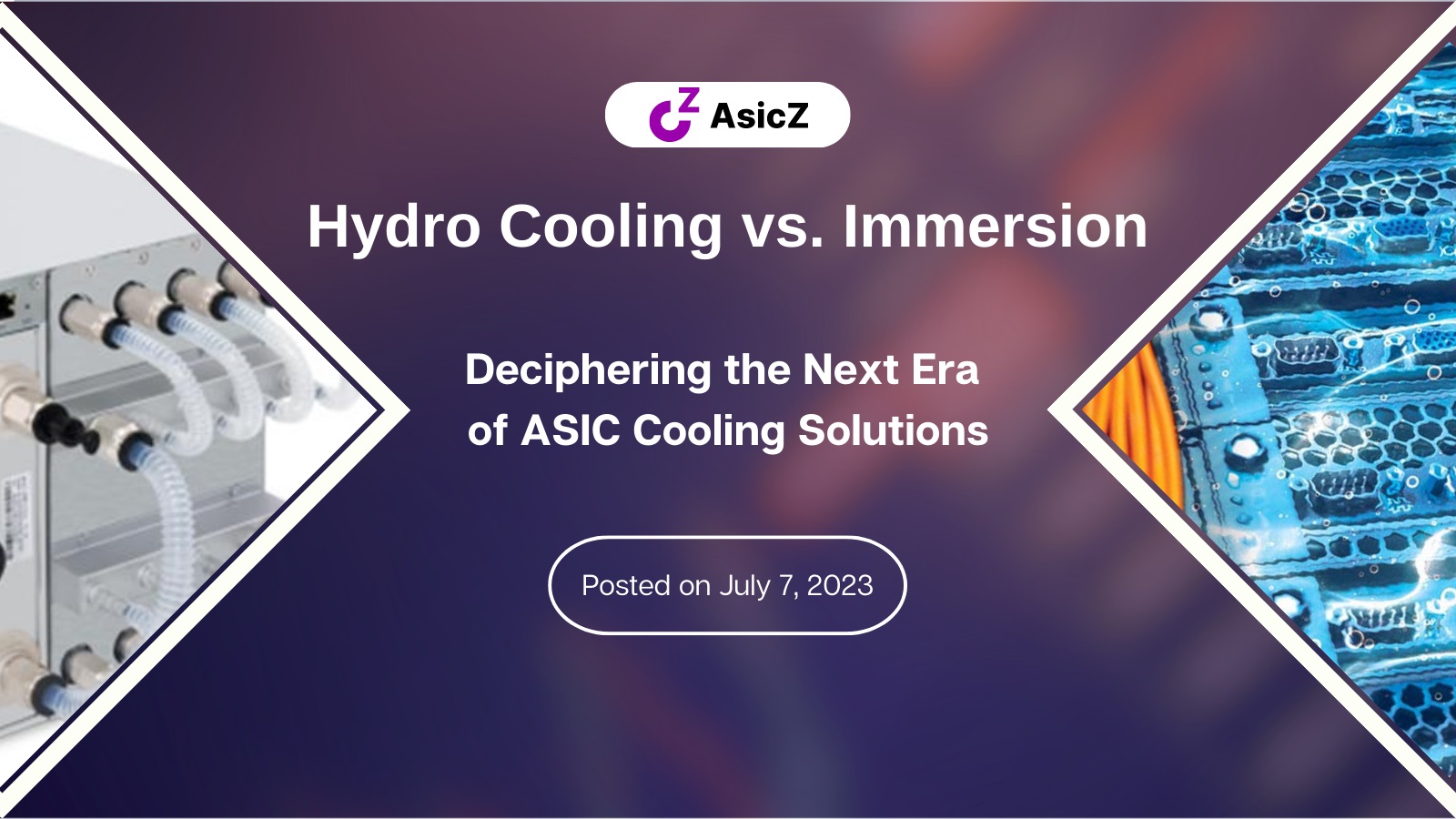As we stand at the precipice of the future of Bitcoin mining, the demand for efficient and effective cooling methods for ASICs (Application-Specific Integrated Circuits) is set to grow exponentially. Currently, immersion cooling is the dominant method, but as we peer into the future, it seems that hydro cooling is poised to take the lead. In this Future Friday article, we’ll explore the potential of hydro cooling, its advantages over immersion cooling, and the game-changing role of thermal pads. We’ll also delve into the recent developments from leading manufacturers Bitmain and Whatsminer, who are both shifting towards hydro cooled miners.
Immersion Cooling: The Present State of Affairs
Immersion cooling involves submerging ASICs in a non-conductive liquid, typically mineral oil, to absorb heat. This method is effective at dissipating heat, resulting in a cooler, more efficient mining operation with potentially longer hardware lifespan. However, the future might hold challenges for immersion cooling.
The setup is complex and costly, requiring a specially designed tank and a large volume of cooling liquid. Maintenance can be challenging, and the cooling performance of mineral oil is lower than water, making it less efficient than hydro cooling. As we move forward, these factors could limit the scalability and efficiency of immersion cooling.
Hydro Cooling: The Future Wave
Hydro cooling, which uses water to cool ASICs, is a less complex and costly alternative to immersion cooling. As we gaze into the future, several factors suggest that hydro cooling could become the preferred choice for many miners.
The lower cost of hydro cooling, due to less required equipment and infrastructure, makes it a more cost-effective option for miners aiming to maximize profits in an increasingly competitive market. This cost-effectiveness is a crucial factor as the Bitcoin mining industry continues to grow and become more competitive.
The superior cooling efficiency of hydro cooling, thanks to water’s higher heat capacity compared to mineral oil, could lead to better cooling performance and improved stability of mining equipment. This efficiency could become increasingly important as ASICs continue to increase in power and heat output.
The ability of hydro cooling to support stable overclocking of mining equipment, potentially providing up to a 60% stable overclock, could result in higher hash rates, increased profits, and faster ROI. As miners seek to squeeze every bit of performance out of their hardware, this advantage could become increasingly significant.
Moreover, the lower maintenance requirements of hydro cooling, due to fewer moving parts, could free up resources for other aspects of the mining operation. This efficiency could become increasingly important as mining operations scale up.
The environmental friendliness of hydro cooling, thanks to the recyclability of water, could also become a key factor as the industry faces increasing scrutiny over its environmental impact.
Finally, the suitability of hydro cooling for hot and dusty environments and its easier resale process could make it an attractive option for miners operating in challenging conditions and those looking to regularly upgrade their hardware.
The potential of thermal pads in hydro cooling is a game-changing factor to consider. Thermal pads are durable and can last the life of the miner, unlike thermal paste which can degrade over time. This could make maintenance easier and more cost-effective, a crucial factor as mining operations scale up.
The Future is Hydro: Bitmain and Whatsminer Lead the Way
Leading ASIC mining device manufacturers Bitmain and Whatsminer are both shifting towards hydro cooled miners, indicating a strong future for hydro cooling. Bitmain recently revealed the Antminer S19 XP Hydro, a liquid-cooled ASIC mining device that claims to produce 255 TH/s at 20.8 joules per terahash (J/T). This new model is even faster than Bitmain’s previous machine, the Antminer S19 Pro+ Hydro, which boasts 198 TH/s.
Meanwhile, Whatsminer unveiled three new additions to their series during the Bitcoin 2023 conference in Miami. The latest models, the M50S++, M53S++, and M56S++, boast hashpower ranging from 150 terahash per second (TH/s) to an impressive 320 TH/s. The M53S++, a hydro-cooled ASIC miner, delivers an unrivaled hashpower output in the industry today, reaching a staggering 320 TH/s — a whole 65 TH/s greater than Bitmain’s Antminer S19 XP Hydro.
These developments from Bitmain and Whatsminer suggest a strong future for hydro cooled Bitcoin miners. As technology advances, the capabilities of ASICs have dramatically increased with innovations like hydro and immersion-cooling systems alongside increasingly efficient architecture.
Conclusion: A Glimpse into the Future
As we look towards the future of Bitcoin mining, the numerous benefits of hydro cooling suggest it could become the cooling method of choice. Its lower cost, higher cooling efficiency, lower maintenance requirements, environmental friendliness, safety, stable overclocking, suitability for hot and dusty environments, and easier resale process make it a compelling choice. The shift to hydro cooling by both Bitmain and Whatsminer seal it’s fate as the preferred choice.
If you’re strategizing for the future of your mining operation and in search of efficient and cost-effective cooling solutions, consider reaching out to AsicZ at team@asicz.com. As a premier provider of volume ASIC mining hardware, we’re dedicated to delivering products that offer both sustainability and durability. Whether you’re an advocate for immersion cooling or a proponent of hydro cooling, you can rely on AsicZ to supply the hardware necessary to optimize your mining operation. With our relentless commitment to research and development, we’re consistently at the forefront of mining technology, empowering you to stay ahead in the dynamic landscape of Bitcoin mining.

